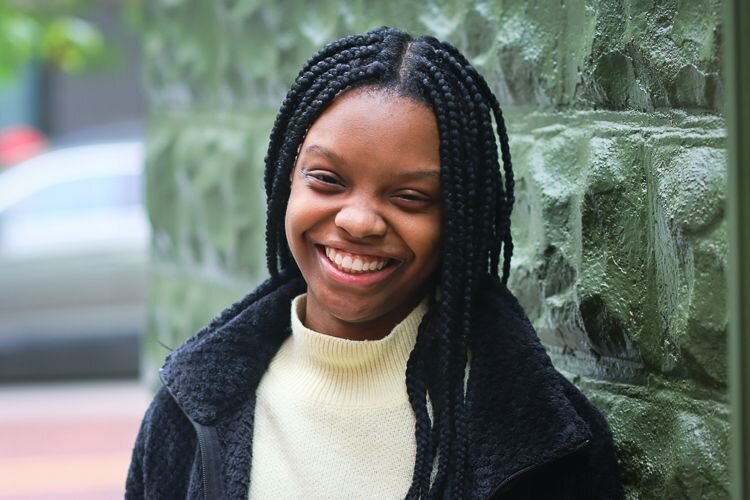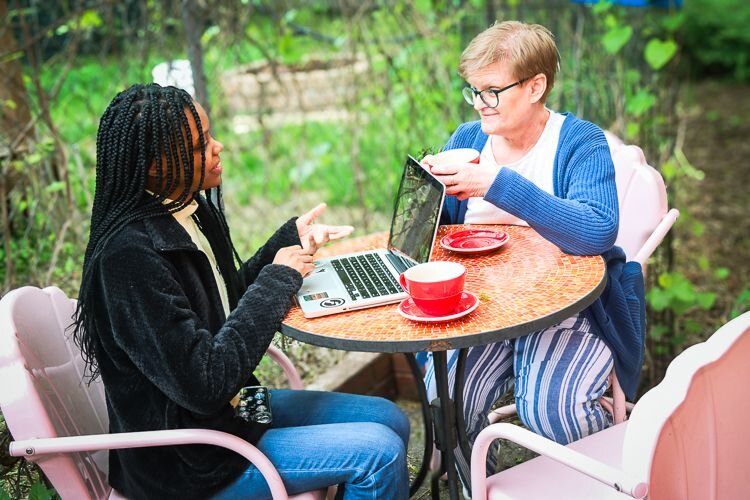Voices of Youth: How educators are trained to best support students with learning differences
As part of our Voices of Youth project, student Mazonnah Holiday shares how teacher training supported her brother and interviews a Grand Rapids Public Schools teacher about teaching students with learning differences.
My parents noticed early that my brother Jermaine struggled with his speech and worked with him and his tongue placement to help with his pronunciation of certain words and letters. They noticed that he’d say the letter “W” with an “L” sound. For example, when he says “I love you,” it comes out as “I wuv you.”
When he was younger, he sometimes struggled in class because his speech was more relaxed when he talked. This made his articulation and pronunciation difficult to understand. My parents reached out to my brother’s teacher to request speech support and obtained an individualized education program (IEP) to help him.
The IEP is a year-long program, and he would go for help two times a day, every day. After a year, my parents met with staff to measure his progress. They found Jermaine made lots of progress, and since then, his pronunciation is better. He now goes to speech class once a week and he is more mindful of his pronunciation. He takes his time to pronounce his words and speak clearly.
Jermaine is now in third grade. He made progress because he had teachers who were ready to help him and his condition. His teachers were open to understanding the needs of what would help him. They were hands-on and supportive to better help him with his tongue placement and articulation.
Teacher training for students with learning differences is what helped my brother succeed. His teachers knew the best tools and practices to reach a student with unusual needs. I wanted to learn more about how teachers are trained to support students with different needs and found that as part of teacher training, educators follow a set of rules. I learned teachers follow the Individuals with Disabilities Education Act, the Americans with Disabilities Act (ADA) and Section 504 of the Rehabilitation Act.
In addition to laws, many teachers offer differentiating instruction for students with various needs. Some helpful teaching methods they use are graphic organizers, direct instructions, feedback, annunciation and more, which help students with all kinds of learning styles connect with the information.
How this GRPS teacher offers support
I interviewed a GRPS teacher, Tricia Kremke, about how teachers work with students with learning disabilities, specifically how she works with students who have IEPs. She follows what the IEP says and meets with a special ed consultant to make sure she understands the information.
“I do everything that I can to make my students feel as comfortable and similar to the other students as possible,” Kremke says.
To make sure her students understand the assignment, Kremke says she has the option to invite a trained consultant into the room or allow the students to go to another classroom for assistance. Sometimes, if they need help in class, she’ll connect with students privately and break the assignment into smaller chunks so it is not overwhelming.

Voices of Youth author Mazonnah Holiday.
“I create separate tests with fewer options for multiple choice, or only specific questions so that it is more doable,” she says. “Mostly, I try to create an environment that is accessible and welcoming for everyone.”
While Kremke doesn’t only teach cognitively impaired students, she does have students with learning disabilities. To reach those students where they are, she focuses on learning over completing an assignment.
“I will go to them and show them what parts of the assignment are critical for them to complete instead of completing the entire assignment because that might be too cumbersome.”
Kremke says she only gives her students what they are capable of doing and gives them assignments they can complete yet are challenging, so they “don’t feel like they are being babied.”
Other forms of training
Kremke also participates in social-emotional learning training. For example, if a student is overstimulated by noise, she allows them to wear headphones. Basically, it all comes down to Kremke’s goal to create a classroom that is welcoming and accessible for all.
“If I have a student who is triggered by certain kinds of literature or who I know has suffered some kind of trauma, then I obviously either avoid that topic or that literature, or I go to the student ahead of time and ask if they’re comfortable being in the room while we’re doing this,” she says. “It all just really depends on the kid and what their need is.”

Mazonnah Holiday (foreground) speaks with teacher Tricia Kremke about how teachers work with students with learning differences.
Kremke works closely with a therapist at the school to make sure students’ needs are met. In addition to Kremke’s resources through GRPS, she has also been to a SIOP (Sheltered Instruction Observation Protocol) workshop that teaches different methods of assessments such as scaffolding, teaching students with a different language and breaking down assignments.
She’s also been to several training sessions for working with students who are kinesthetic learners or have ADHD. Kremke has also been to training sessions about ADHD, autism spectrum disorder, reactive attachment disorder, fetal alcohol syndrome, social-emotional learning, trauma and anxiety, as well as other topics.
“I feel like we have gotten pretty great information, and if we need more, we can ask for it, and we usually get it. GRPS has been great about it,” she says. “When I taught in private school the training was OK, but not nearly as comprehensive as what I get.”
Throughout her experiences, Kremke saw a discrepancy in how some students are treated.
“Training is always available for helping kids who have cognitive requirements, but not so much for gifted and talented students.”
Meeting needs of all
Kremke says she has never had a class on how to work with gifted students, and she has noticed a trend in how teachers utilize their gifted students.
“Actually, how I find most gifted kids are treated in schools is that they are used by the teacher to tutor other students,” she says. “Sometimes, this can be a good thing, because teaching something is the best way to really learn it. But what about that kid’s needs? What about how he or she needs to be challenged?”
Kremke recognizes that some schools have specific programs where gifted and talented students can do project-based learning, but not all schools offer this work.
“Because teachers largely have to teach to the middle intellect of the group, it is difficult to create extra challenging assignments for students who excel,” she says.
Kremke wishes she had more training on students across a vast learning spectrum.
“I might have a kid with a third-grade reading level and another kid who is reading at a college level,” she says. “Meeting all of those needs is really challenging, and I wish that I had more training for that.”
Mazonnah Holiday is 15 years old and a student at Northview High School in Grand Rapids. She’s an author and a writer. Her work has been featured in two books.
To learn more about Rapid Growth’s Voices of Youth project and read other installments in the series, click here. This series is made possible via underwriting sponsorships from the Steelcase Foundation, Frey Foundation, PNC Foundation and Kent ISD.









